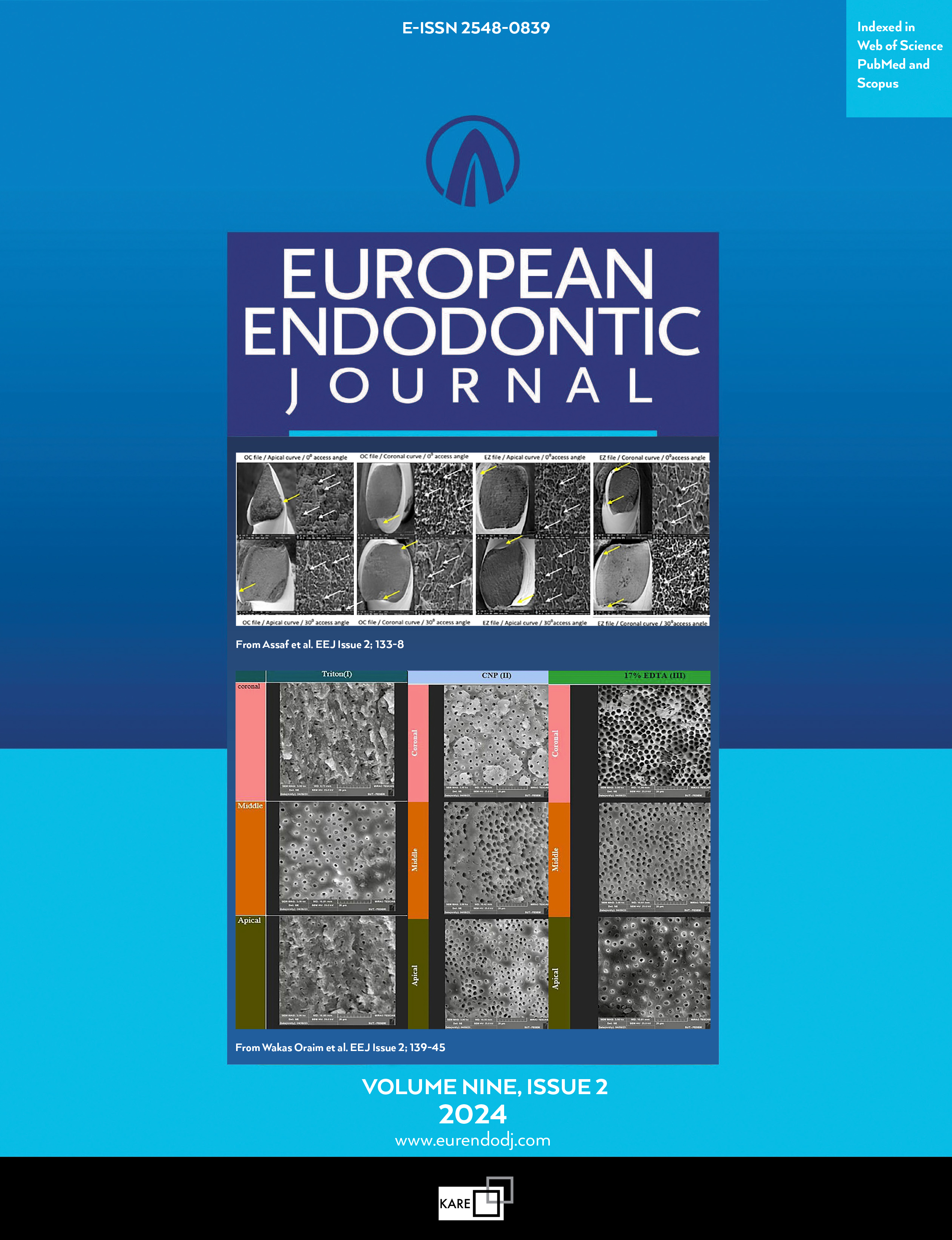Metrics
2022 IMPACT FACTOR
5 year Impact Factor
Eigenfactor
2022 CiteScore
Journal Citation Reports (Clarivate, 2023)(Dentistry, Oral Surgery & Medicine (Science))
In Vitro Evaluation of Smear Layer and Debris Removal and Antimicrobial Activity of Different Irrigating Solutions
Raffaella Castagnola1, Cecilia Martini2, Mauro Colangeli1, Ilaria Pellicciotta1, Luca Marigo1, Nicola Maria Grande1, Francesca Bugli3, Gianluca Plotino41Department of Ageing, Neurological, Orthopaedic, Head and Neck Sciences, A. Gemelli University Polyclinic Foundation IRCCS, UOC General Dentistry and Orthodontics, Rome, Italy; Department of Head-Neck and Sense Organs, Catholic University of the Sacred Heart, Rome, Italy2Department of Basic Biotechnological Sciences, Catholic University of the Sacred Heart, Intensivology and Perioperative Clinics, Rome, Italy
3Department of Basic Biotechnological Sciences, Catholic University of the Sacred Heart, Intensivology and Perioperative Clinics, Rome, Italy; Department of Laboratory and Infectious Sciences, A. Gemelli University Polyclinic Foundation IRCCS, Rome, Italy
4Private Practice, Rome, Italy
Objective: The aim of this in vitro study was to compare the smear layer and debris removal and antimicrobial activity of two dual-action irrigating solutions for continuous chelation (Triton; Brasseler, Savannah, USA and Dual Rinse HEDP; Medcem GmbH, Weinfelden, Switzerland) with a dual step irrigation protocol with sodium hypochlorite (NaOCl) followed by ethylenediaminetetraacetic acid (EDTA).
Methods: Thirty single-rooted single-canal teeth were divided into three groups (n=10) and irrigated with Triton, Dual Rinse HEDP mixed with 6% NaOCl and 6% NaOCl/17% EDTA. The teeth were observed under a scanning electron microscope (SEM) to assess the canal wall cleanliness. In addition, 80 dentine discs were contaminated with Candida albicans and 80 discs with Enterococcus faecalis and irrigated with Triton, Dual Rinse HEDP mixed with 6% NaOCl and 6% NaOCl/17% EDTA or not treated (n=20). Fifteen discs were used to evaluate colony-forming units, while 5 discs were analysed by SEM. Data were analysed using the Shapiro- Wilk, Kruskal-Wallis and One-Way ANOVA tests.
Results: Triton was statistically more effective than Dual Rinse HEDP and NaOCl/EDTA in removing debris (p<0.05), except with NaOCl/EDTA in the coronal third. Triton was more effective than Dual Rinse HEDP in removing the smear layer from the apical and middle thirds (p<0.05). All the irrigation protocols significantly re- duced the number of E. faecalis. The Triton group showed the lowest number of remaining C. albicans (p<0.05).
Conclusion: Triton was the most effective irrigation solution in removing debris and as effective as NaOCl/ EDTA in removing the smear layer. Triton showed the highest efficacy against C. albicans. New irrigating solutions that provide continuous chelation may provide an alternative to current irrigation protocols. (EEJ-2022-12-168)
Corresponding Author: Raffaella Castagnola
Manuscript Language: English
(471 downloaded)


